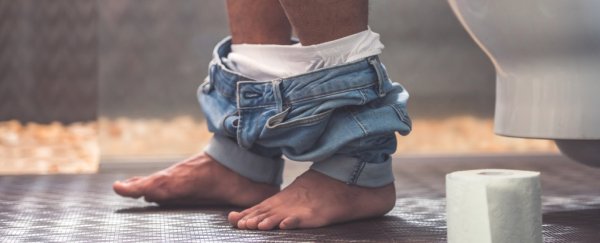Once sewage is drained of water, treated, and dried – what the heck do you do with it?
Well, some of it ends up as fertiliser, but a massive 30 percent of our poop leftovers is sent to landfill to rot, or just sits in storage. What a waste.
Especially when, according to researchers from Australia's RMIT University, using these 'biosolids' in bricks could be a surprisingly effective way of repurposing all that former sludge.
Making biosolids into bricks "is a practical and sustainable proposal for recycling all the leftover biosolids worldwide," the team write in their new paper.
"Utilisation of only 15 percent of biosolids in brick production would reduce the carbon footprint of brick manufacturing whilst satisfying all the environmental and engineering requirements for bricks."
 Biosolid bricks (RMIT University)
Biosolid bricks (RMIT University)
Ordinarily, bricks are made by using a mix of clay or concrete materials.
According to the researchers, the 1.5 trillion bricks produced globally requires some 3.13 billion cubic metres of clay soil.
That's the equivalent of 1,000 soccer fields, dug to an insane depth of 440 metres (1,440 ft) – deeper than the height of the Empire State Building.
So, they got their hands dirty, and measured how much biosolid you can use in a brick without it losing its structural integrity or causing it to fall apart.

All in all, the poop mixture preformed admirably. When using between 10 to 25 percent biosolids, the bricks passed strength tests, and the heavy metals inside the biosolids remained preserved inside the bricks.
They also found that biosolid bricks are more porous than standard bricks, meaning they are better insulators, letting less heat escape.
"Using biosolids in bricks could be the solution to these big environmental challenges," explains RMIT engineer Abbas Mohajerani.
"It's a practical and sustainable proposal for recycling the biosolids currently stockpiled or going to landfill around the globe."
As well as being good at being bricks, it takes less energy to fire a biosolid brick, which could considerably lower manufacturing companies' carbon footprint and energy bill.
But we're not there yet – more research is needed, as biosolids from different places can present huge changes in chemical composition and characteristics. More testing will need to be done before you see these bricks on shelves (or in walls).
But, either way, with temperatures rising around the world, and less and less time to do anything about it, we need weird solutions like this (no matter where they come from).
The research has been published in Buildings.
